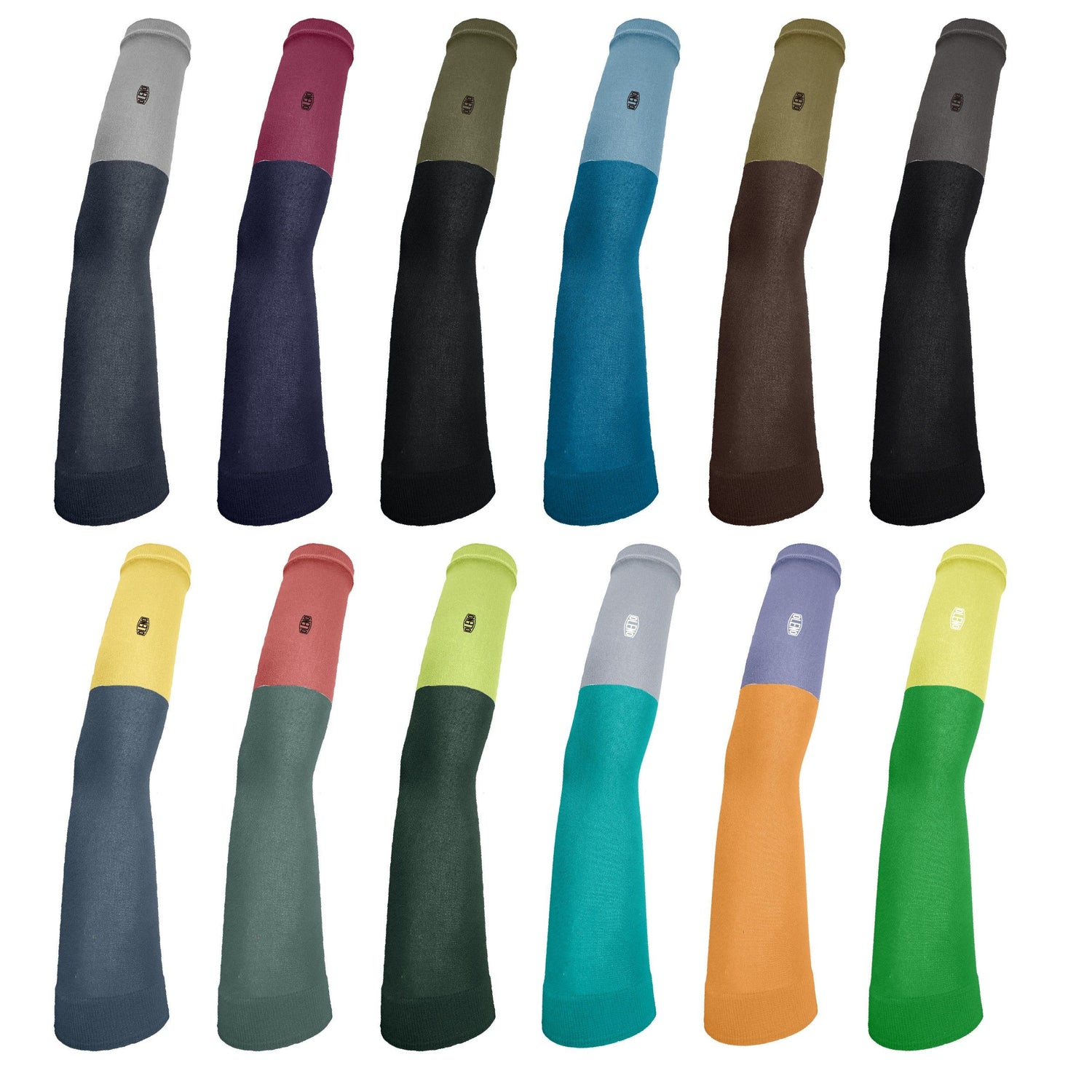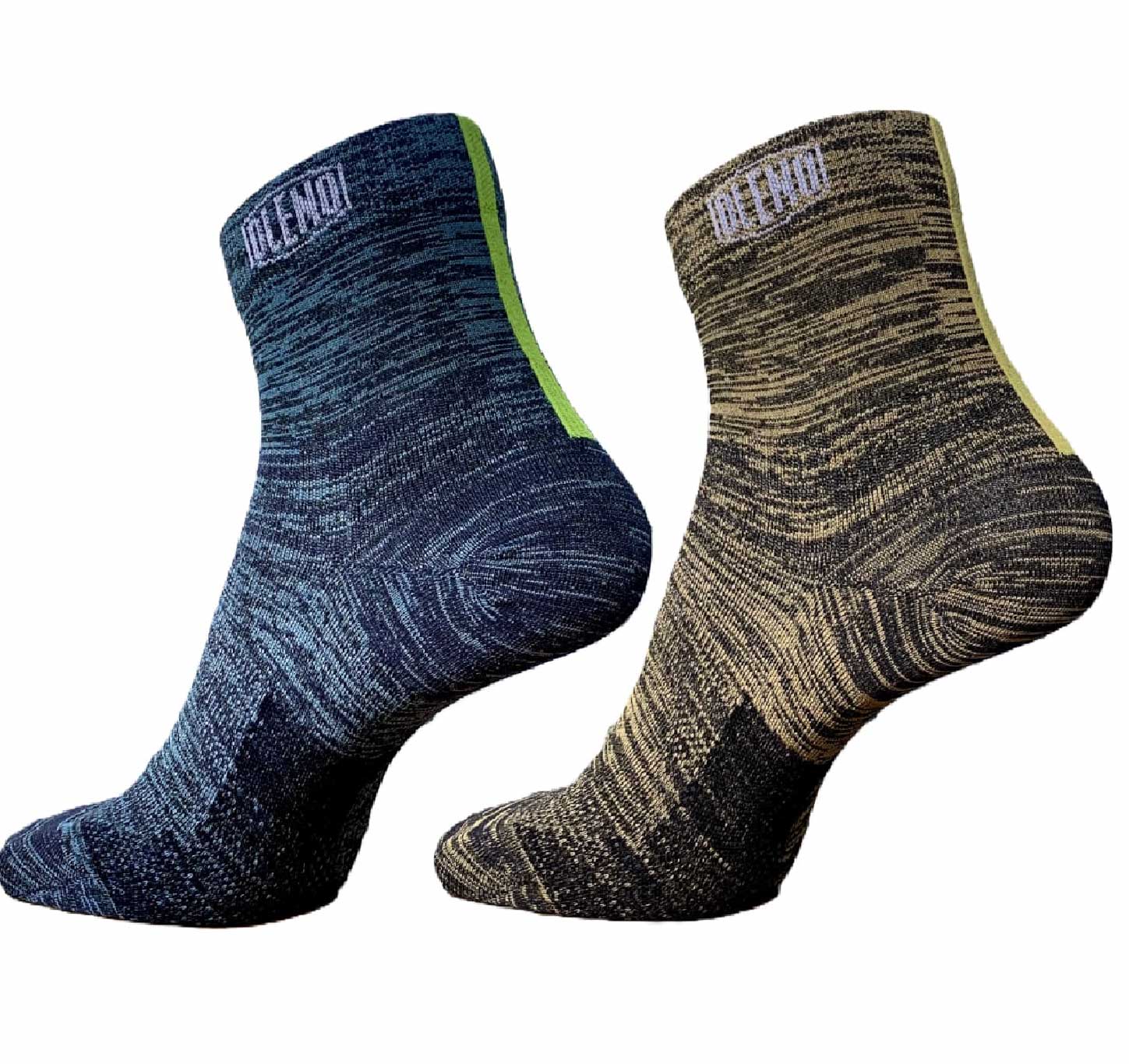Hello, I'm Hiroki, a new staff member!
Since joining the company, I have been learning a lot about socks and have come across the word wool more than I can count.

I never looked at the material when buying clothes or towels, but since I entered the sock industry, I've been conscious of looking. I found that wool is used quite a lot in socks and scarves sold in the winter, and I thought wool = winter! But the president of the company told me with a grin, "Wool is for summer."
So I thought it would be rude not to fully understand wool, and so I used my working hours to research it further, which I have summarised in this article.
If you are new to wool, please take a look at this article and use it as a reference when buying clothes and socks. (Sorry for the condescending tone.)
How much material is used in socks?

Before we look into wool,
First of all, I was curious about how many materials are used in socks and clothes, so I looked into it.
...But aren't each pair and each piece made from one material? I couldn't help but interject in Kansai dialect.
This is because clothes and socks are made by mixing multiple materials, and depending on the combination, tens of thousands of different clothes and socks can be created.
I felt like "this is where the fun of manufacturing comes in!", but I was also told that the properties are determined to some extent by the materials used, so I would like to write very briefly about the characteristics of each material.
Angora Mohair
An animal fiber, shorn from the Angora goat or Angora rabbit. Often used for sweaters, scarves, and blankets.
merit
- Smooth to the touch
- It's light and fluffy
Disadvantages
- Hair falls out easily
- Static electricity easily occurs
Cashmere (I know that)
Animal fiber. Woven from the hair of cashmere goats. Often used for clothing such as sweaters, scarves, and gloves.
merit
- Excellent heat retention and moisture retention
- Light and warm
Disadvantages
- It's expensive (I remember giving up on buying a muffler once)
- Low production volume
If I were to write about it, it would deviate from the content of this article, so I have summarized each material using a different fabric. If you are interested, please take a look at that.
So now we move on to the main subject of wool and its true nature .
A natural air conditioner!?
In fact, since wool is often used for items that are useful in winter, such as coats and scarves, I think there are many people who think that wool is a warm material , like me, but it seems that it is actually an air conditioner . Despite its indescribable face, sheep are amazing.

Things get a little complicated from here on out, but wool is apparently excellent at regulating temperature , making it a versatile material that can be used to keep you warm in the winter and cool in the summer.
If you think about it, if you go to a farm or zoo in Japan in the summer, you can see sheep running around happily, and I think that's because they are regulating their temperature with their own wool.
To explain it more logically, each wool fiber is curled. Air gets trapped between the curled fibers, creating a layer of air between the fibers and the outside air . This layer of air acts as an insulator , protecting the fabric from the heat and cold of the outside air.
Hearing it like that, I wonder if it's an exaggeration to call it an air conditioner, but as the saying goes, every little bit counts, so I wonder if the effect will be felt when it's condensed on clothes and socks.
This is amazing! No sweating and no smell

Foot odor is a problem that many people worry about. If it could be reduced, it would be a dream come true, and wool seems to be the hope of mankind. This is because wool is said to be a material that does not easily get sweaty or smelly.
It is one of the most moisture-wicking fibers, and is said to absorb twice as much moisture as cotton and 40 times as much moisture as polyester.
Is the wool amazing or is the polyester just too weak?
However, there seems to be solid evidence that the reasons why feet get sweaty in the first place include not absorbing sweat (socks have poor sweat absorption) and humidity remaining high inside the socks (poor moisture release).

There is a number called "official moisture regain" that indicates sweat absorption.
Cotton: 8.5%
Nylon: 4.5%
Wool: 15%
These numbers also show that wool absorbs a lot of moisture.
(Reference: https://thermohair.jp/socks/%E9%9D%B4%E4%B8%8B%E3%81%8C%E8%92%B8%E3%82%8C%E3%82%8B%E5%8E%9F%E5%9B%A0%E3%81%AF%EF%BC%9F%E8%92%B8%E3%82%8C%E3%81%AA%E3%81%84%E9%9D%B4%E4%B8%8B%E9%81%B8%E3%81%B3/)
As for the other moisture-wicking property, the surface of wool is covered with scales called "scales," which are equivalent to the cuticle of human hair.
The gaps between the scales allow the fabric to repeatedly absorb and release moisture , just like breathing, so even when you sweat, it doesn't get stuffy and stays smooth and dry against the skin.
Does it also have deodorizing and antibacterial properties?

I was already blown away by the amazing qualities of wool, but it also has anti-odor and antibacterial properties. Wow, that's just as versatile as Shohei Ohtani...
Wool, being a natural fiber, naturally has immune functions , which gives it excellent deodorizing and antibacterial properties, helping to suppress the unpleasant smell of sweat.
Another characteristic is that it is smooth and soft to the touch , but I personally prefer sturdy fabrics to smooth fabrics, so I won't touch it.
However, I will say one thing: the wool used by OLENO, called Merino wool, which is obtained from Merino sheep native to Australia and New Zealand, is said to be by far the smoothest. (This is also commonly said, so please look it up.)
So far, I have revealed everything about wool.
It has the perfect performance to be called a high-performance fiber, but it is also expensive. I would hesitate to use it for everyday wear, but I think it would be quite good for occasional use when camping or hiking.
OLENO also has a wide selection of wool socks, so if you're reading this and thinking, "Wool is amazing!", please try the finest merino wool. (I'm planning to start using them today.)




